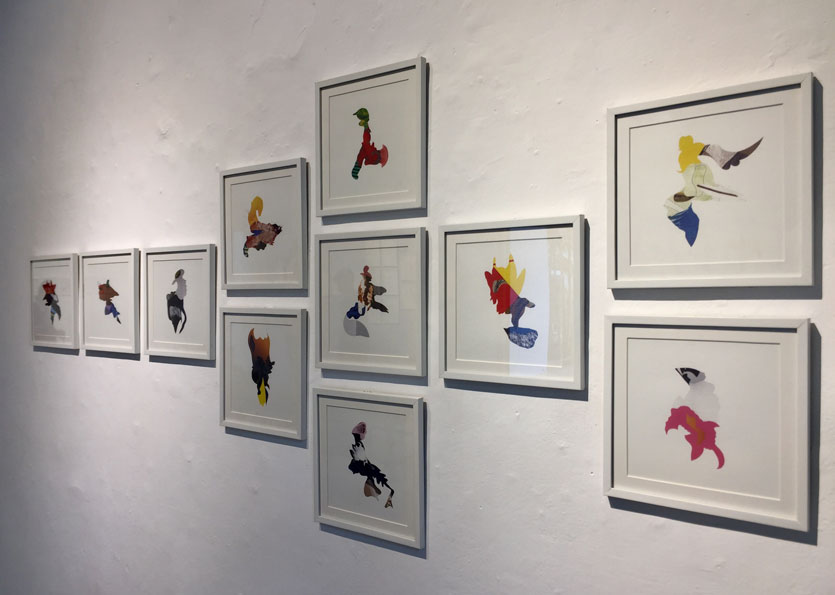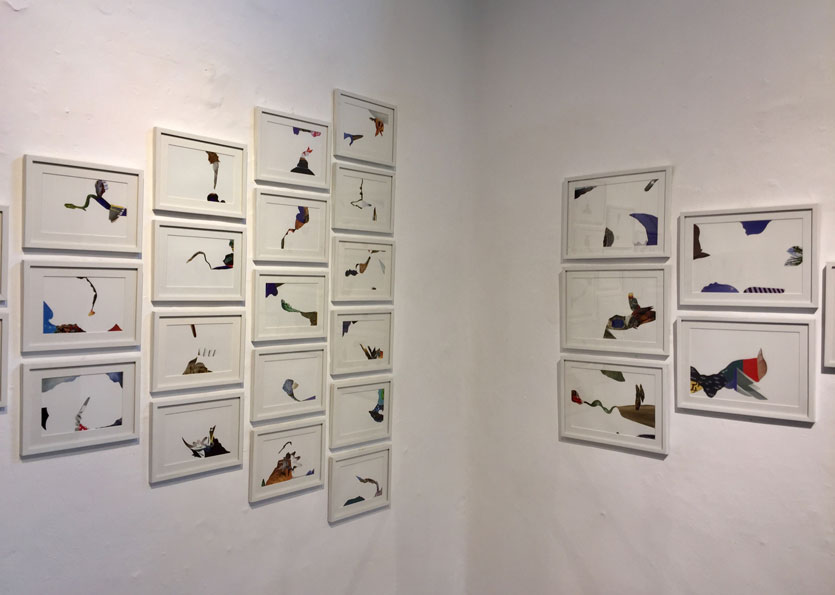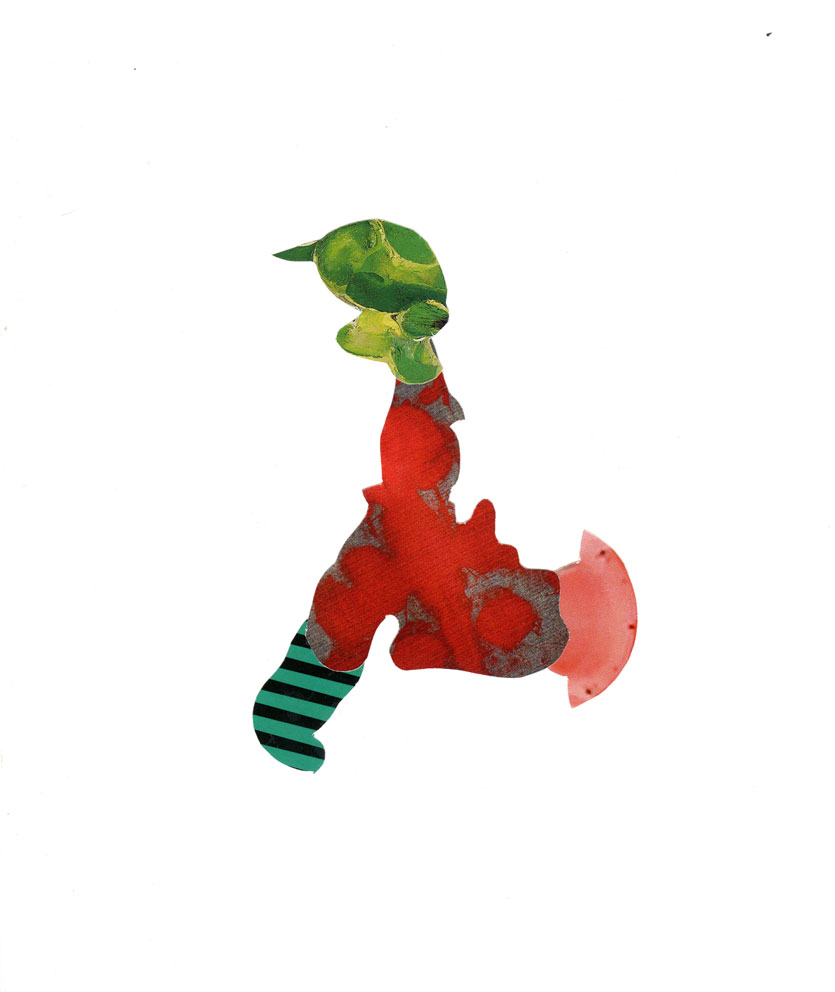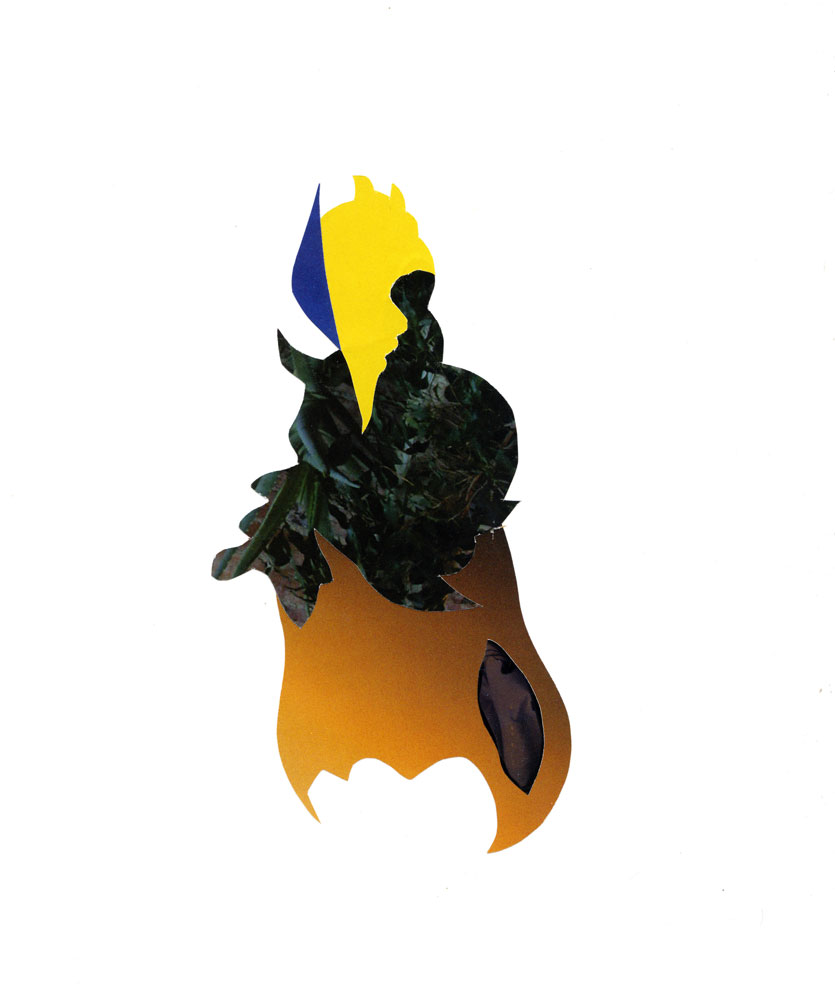Mar 03 2017.
views 832Your latest one-man exhibition is at Barefoot. How many exhibitions have you had so far?
This will be my fifth solo exhibition at Barefoot. Then, I’ve had two in Pakistan – in Karachi and in Lahore. One each in New York and Delhi. Some others, I’m not sure, maybe twelve solo shows in all.
My first, called Untitled, was at Barefoot. That was a long time back – 1995. I’ve also been in a lot of group exhibitions in between.
People think of you as a painter, but you’re exhibiting collages this time. Are you tired of painting and drawing?
I’d been experimenting with computers for a while, using found images. But doing it by hand – with a craft knife and glue – is actually easier for me. I work back to front: create the originals by hand and then reproduce them electronically. Digital enhancement is used to make the final image as close as possible to the hand-finished collage – the opposite of the way you normally use a computer. For example, I won’t smooth out the jaggedness of a knife-cut curve: I make sure you can see the cut marks, and it’s a shock because you’re looking at an image printed out by a computer,and normally you see computers used to smooth out things like that.

Tell about the notebooks in which these collages were originally assembled.
They’re not notebooks – they’re ‘mindbooks’. When I’m working on a painting and get tired, I go to the books, where I keep all these visual shapes and colours and ideas I’ve noted down, to figure out my next step. Or when I’m thinking about the next painting I’m going to do, where I’m going next. It doesn’t take the whole studio to work on a book – just a table, a cutting board, scissors, an Xacto knife and some glue.
Your works are getting smaller and smaller. Are you secretly a miniaturist?
I never had a big studio. My London studio is tiny. Besides, who is going to buy great big expensive works? These small pieces work together in sets. At this exhibition, I’m showing only five works – five sets. But there are over eighty different collages in all.

You’re not exhibiting the books themselves?
No, those are only for me.
Why don’t you give your works names? Even your first exhibition was called Untitled.
Sometimes I do! But names don’t come out of me like that. Maybe because if I think of a name first, then I’d be stuck, I would end up doing a painting that fit the name. And I find it hard to think of a name after a work is finished. Maybe I should try a bit harder.
Some of your collages have words in them.
Yes, all mixed up.Mixed-up letters and mixed-up words. They can mean anything you like. I’m not trying to make some big statement – the words are just cut out, from art magazines mostly, and reassembled. That art-critic style of writing, you know – I like to make fun of that.

Tell us about some of your other work. How did you achieve the Night Series, those black-on-black nighttime landscape paintings that I have to stare at for so long before I can make out the scene?
I worked at night with as little light as possible, because the more light you have on the painting, the more your night vision suffers. So I had just a little light on my palette – all you need to see is the palette. You can’t light the canvas itself, if you do the whole thing changes and the scene vanishes. So you use very little light and train yourself to look hard.
The Nightscapes are works of amazing understatement. In a world full of shouting, competing entertainment media, don’t artists also have to shout be heard? Perform stunts, create controversy just to make an impact?
Your personality is in your art. As soon as the personality of your art changes, people who know your work will see it and realize you’re not producing genuine work any more, it’s just a stunt. So they stop thinking of you as genuine. Your style can change but the personality has to be consistent.

You had your Red & Black exhibition soon after your own illness, and I remember thinking I could see so many forms in those paintings that looked like diseased organs, or creatures like internal parasites.
You can be inspired by anything. We see so many forms, shapes. You see a bird passing by – just the shape, maybe, or just the colours. You keep them in mind and later you put them down on paper. When I was ill these were the thoughts and images I had to work with.

Music is almost as important to you as painting. Why is that?
Music is visual for me: the twang of a guitar makes a kind of line, the bass might be a big blob. Sound has shapes and lines and colours. Some shapes are big, some small. Soundscapes are combined from these elements. That’s how I combine my own work, too.
What are you listening to these days?
A lot of Western classical. I’m learning about it – the composers’ lives, the times they lived in, their way of looking at things. Living in England gave me the opportunity to learn about this music I had never had the chance to hear properly before. I listen to a lot of BBC Radio Three. I go to concerts, but after a while I start getting edgy. I like being relaxed when I listen to music. Not seated stiffly in formal clothesfor hours. If I had to sit througha Wagner opera in a suitI would go crazy.
Here in Sri Lanka I listen to other kinds of music. It depends on where you are.
Name some artists you admire.
I love Peter Doig, who’s a brilliant landscape artist. William Kentridge, a superb draughtsman and animator. He makes some killer videos. Jake and Dino Chapman – have you seen them? They really kick ass. I like a lot of new guys; I could go on and on.
The Asian artists I like are of an older era: Justin Deraniyagala of the Forty-Three Group in Sri Lanka, Nasreen Mohamedi,a famous minimalist painter from India. From Pakistan, Sadequain.
I like art I can learn from. Among the modern masters, I learned a lot from the colourists: Bonnard, Cézanne, Seurat. Seurat’s colour was like TV. But there are so many. It never ends.
Muhanned Cader’s latest one-man exhibition will remain open till 19 March at Barefoot Gallery.
Interview by Richard Simon
0 Comments